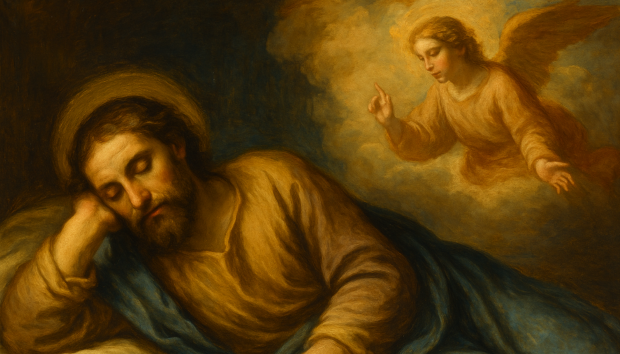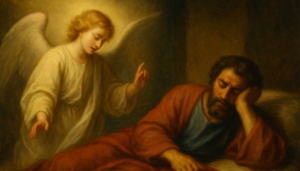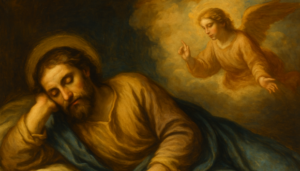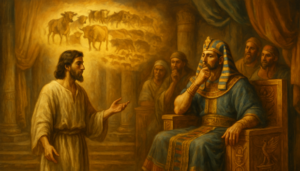Introduction
Throughout history, dreams have been seen as windows into a deeper spiritual reality. For Christians, the Bible presents a powerful tradition of dream-based communication from God—one filled with vivid, layered biblical dream symbols that carry spiritual meaning. These dreams weren’t random flickers of the subconscious; they were divinely inspired visions that shaped destinies and revealed God’s will.
Consider Joseph, whose interpretations of Pharaoh’s dreams led him to save nations, or Daniel, whose night visions unveiled divine mysteries to kings. Their stories highlight just how profoundly symbolic and spiritually charged dreams were in biblical times. The symbols they encountered—like sheaves of wheat, beasts, or shining lights—weren’t mere metaphors; they were sacred messages requiring wisdom and spiritual insight.
Today, many Christians still believe God can speak through dreams. But what do these ancient biblical dream symbols mean in a modern context? In this article, we’ll explore 12 of the most significant symbols found in Scripture and how believers today can interpret them through the lens of faith, discernment, and Scripture.
Biblical Context: How God Uses Dreams
In both the Old and New Testaments, dreams are presented as one of God’s methods of revealing His will. In Genesis, God uses dreams to communicate with patriarchs like Abraham, Jacob, and Joseph. Jacob dreams of a ladder reaching into heaven; Joseph’s dreams foretell his future leadership. In the book of Daniel, dreams unveil empires yet to rise and confirm God’s sovereignty over history. Importantly, these dreams are often rich in symbols—requiring interpretation rooted in divine insight, not guesswork.
The New Testament also upholds the importance of dreams. Joseph, the earthly father of Jesus, receives multiple dream-based warnings and instructions. The Magi are guided in a dream not to return to Herod. These moments highlight continuity in divine communication through dreams.
While some denominations are more cautious today, others, especially Charismatic and Pentecostal traditions, still view dreams as spiritually valid forms of revelation. Scripturally, God declares in Joel 2:28 (quoted in Acts 2:17) that “your old men shall dream dreams” in the last days, indicating that divine dreaming is not merely a thing of the past, but potentially a present reality for spiritually open believers.
Common Biblical Dream Symbols and Their Meanings
Dreams in the Bible are never casual—they carry moral, prophetic, or spiritual weight. Understanding the symbolic language God uses in dreams helps Christians discern their meaning today. Here are twelve prominent biblical dream symbols and how they’re often interpreted:
- Snakes: Often symbolize deception, temptation, or Satan (Genesis 3). Yet, in Numbers 21, a bronze serpent becomes a symbol of healing. Context is key.
- Water: Represents life, spiritual renewal, or emotional states. Calm water suggests peace; raging seas often reflect chaos or fear.
- Fire: Symbolizes God’s presence (e.g., burning bush), judgment, or purification. It can signify trials or refining of faith.
- Bread: Reflects provision, God’s sustenance, or spiritual hunger. Jesus as the “bread of life” frames this symbol with divine care.
- Light: A powerful symbol of truth, revelation, or divine presence. To dream of light may indicate clarity or spiritual awakening.
- Lions: Can represent danger, strength, or divine protection—as seen in Daniel’s story. May point to testing or courage.
- Mountains: Often signify spiritual ascent, challenges, or encounters with God (e.g., Sinai). A call to rise above earthly concerns.
- Blood: Represents sacrifice, covenant, and life. It may also indicate warning or redemption.
- Angels: Divine messengers. Dreams with angels often involve guidance, reassurance, or calling.
- Lambs: Symbolize innocence, sacrifice, and Christ himself. A powerful image of redemption or surrender.
- Keys: Denote authority and access. As in Matthew 16:19, keys may point to spiritual responsibility or divine trust.
- Crosses: Core symbol of faith. Dreaming of a cross can represent burdens, sacrifice, or renewed commitment to Christ.
These symbols should always be interpreted in personal context and prayer.
Interpreting Christian Dreams Today
In our modern, skeptical age, interpreting dreams can seem outdated or unscientific. Yet many Christians maintain that God still speaks through dreams—especially when we are receptive and grounded in Scripture. The process of interpretation, however, must be careful, prayerful, and biblically sound.
The first step is discernment. Not every dream is divine—many reflect daily stress or mental processing. Yet some dreams carry unusual vividness, emotional resonance, or biblical symbols that prompt reflection. These dreams should be brought before God in prayer, asking for understanding.
Christians should avoid using dreams for divination or turning to mystical systems not rooted in Scripture. Instead, seek confirmation through the Bible, the Holy Spirit, and trusted spiritual mentors. Recording dreams in a journal can also help identify patterns and track spiritual growth over time.
If you believe God may be speaking through a dream, ask yourself: Does the dream reflect biblical truth? Does it align with God’s character? Does it challenge, comfort, or convict me spiritually? These questions, combined with spiritual guidance, can help separate personal emotion from divine revelation.
Ultimately, dreams can be a spiritual gift—but only when used responsibly and interpreted through a biblical lens.
Case Study: A Dream of Water and Fire
Consider the story of Marcus, a devout Christian facing career uncertainty. One night, he dreams of standing waist-deep in clear water, watching flames on the horizon. Despite the fire, he feels peace, not fear. The dream lingers in his mind for days.
Through prayer and reflection, Marcus remembers Isaiah 43:2: “When you pass through the waters, I will be with you… when you walk through the fire, you shall not be burned.” He shares the dream with a trusted pastor, who confirms its possible spiritual meaning—Marcus is entering a season of trial, but God is preparing and protecting him.
A few weeks later, Marcus loses his job unexpectedly. Yet instead of panic, he recalls the dream and feels reassured. Within months, he starts a new career path that aligns better with his values and calling. Looking back, Marcus believes the dream was a divine message of comfort and warning, helping him stay spiritually anchored through a major life transition.
This story highlights how biblical symbols—water, fire, and peace—can still serve as divine signposts when interpreted through prayer, scripture, and trusted spiritual counsel.
Spiritual Takeaway
Dreams are part of God’s rich and mysterious way of connecting with humanity. While not every dream holds deep meaning, those filled with biblical symbols—light, fire, angels, or crosses—invite closer reflection. These symbols, rooted in Scripture, can offer reassurance, conviction, or direction when understood prayerfully.
The key is not to chase mystical experiences or rely on dreams over God’s Word. Instead, dreams should supplement a faithful life, not steer it alone. When God speaks through a dream, it’s often to affirm what He’s already said through Scripture or to nudge us toward greater dependence on Him.
If you’ve had a powerful or puzzling dream, consider writing it down, praying over it, and seeking biblical wisdom to guide your interpretation. Remember: God is not a God of confusion, but of peace. Let dreams be one of many tools He uses to draw you closer.






